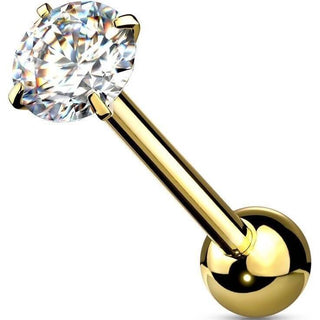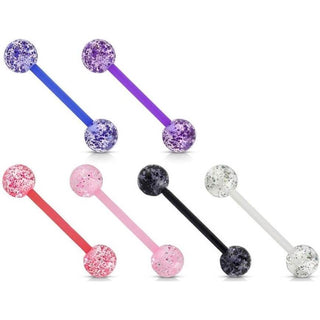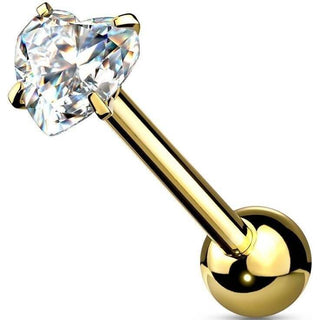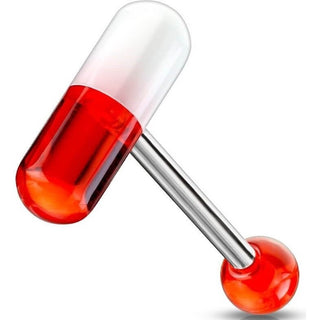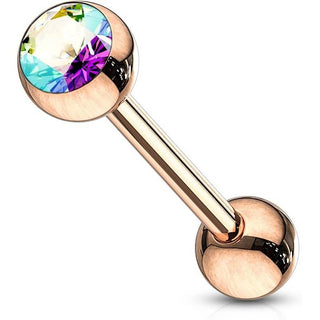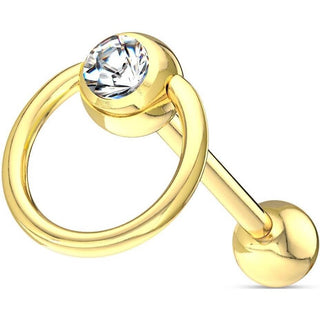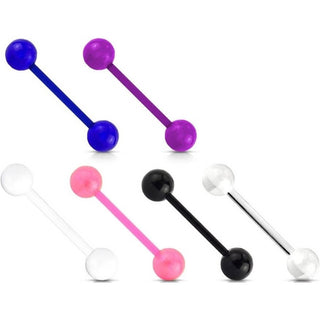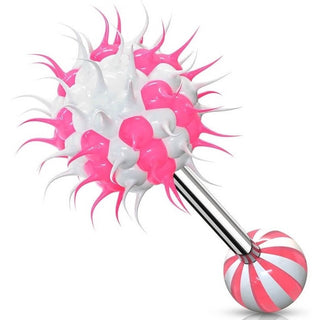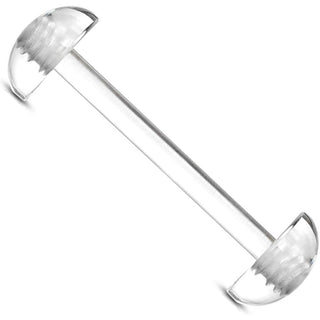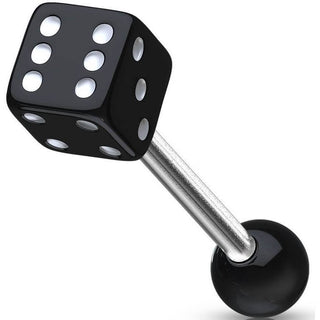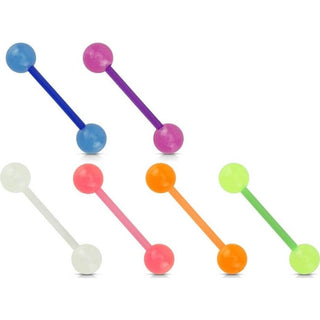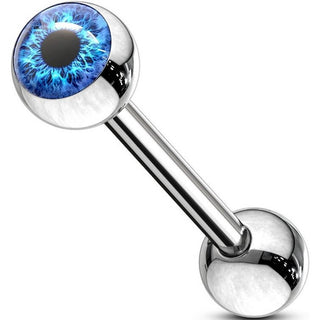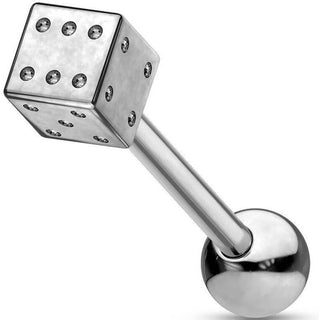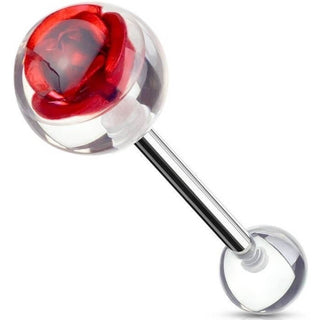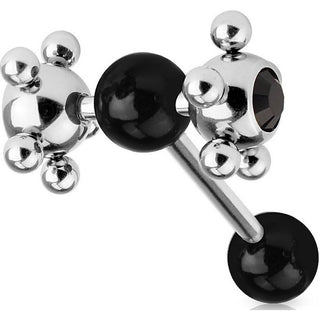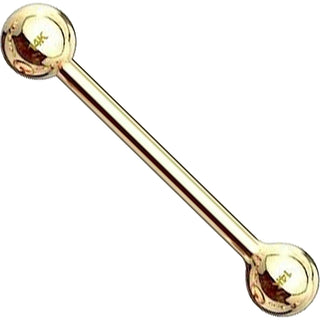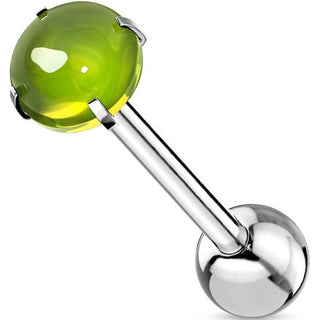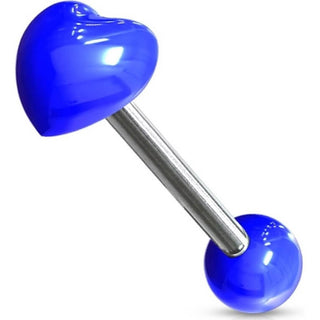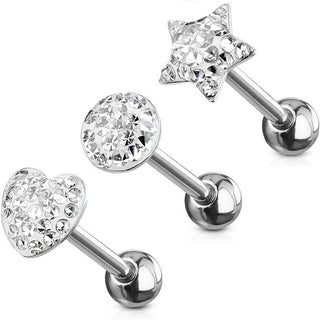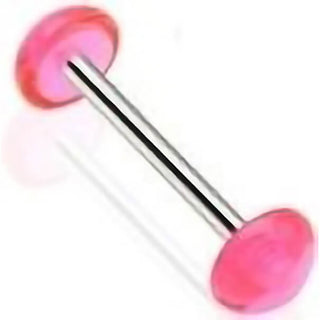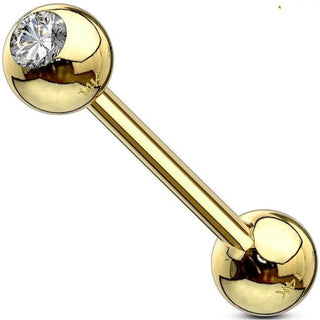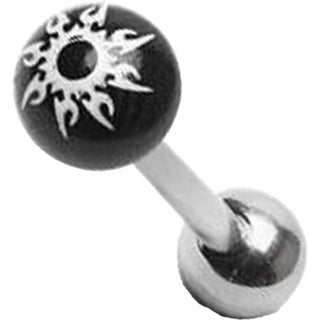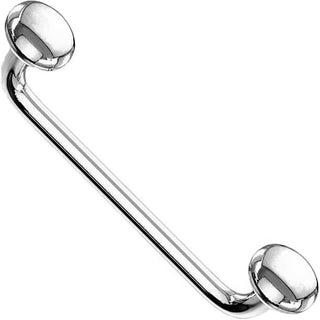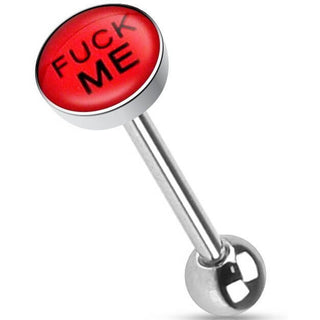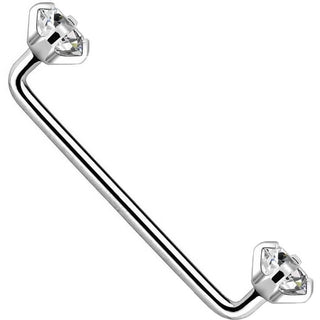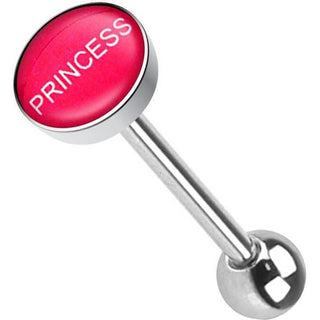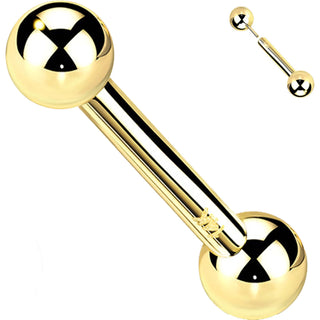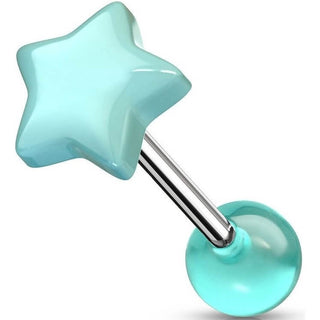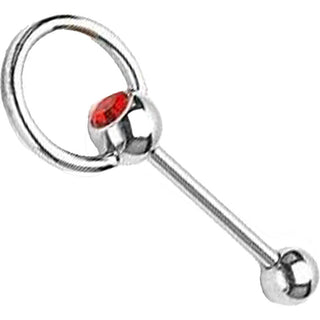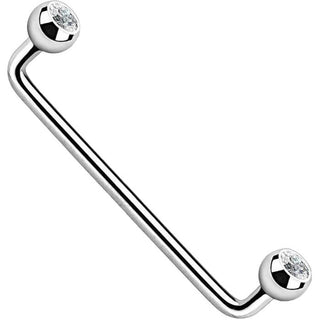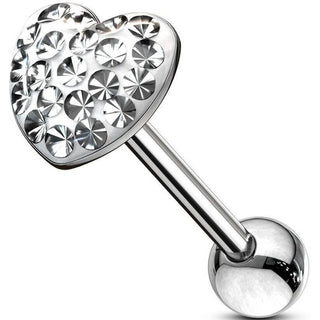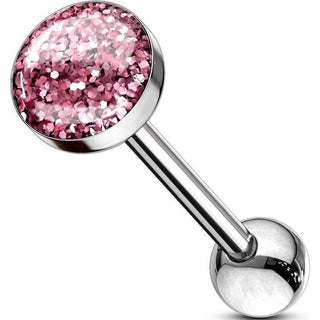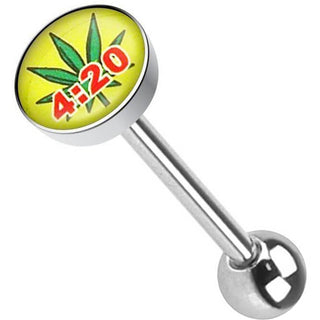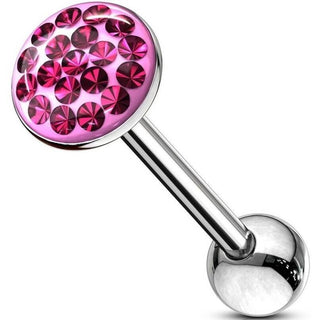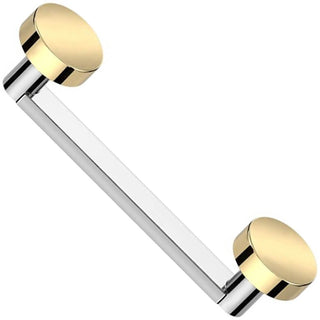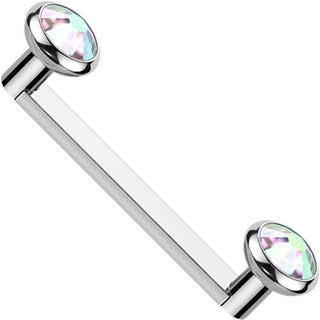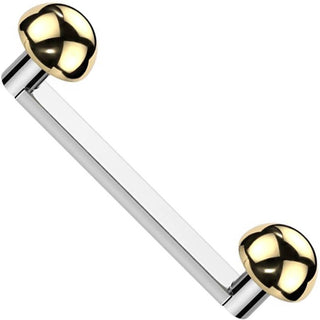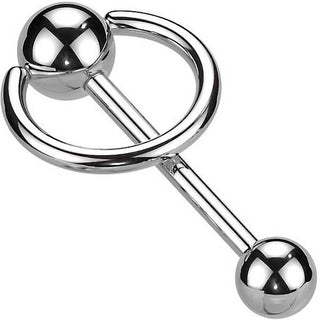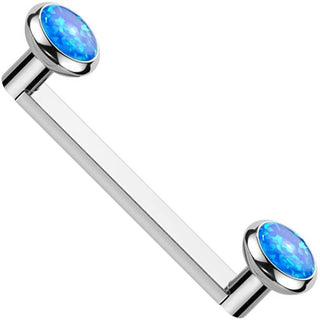Tongue Piercing
Discover our wide range of over 130 tongue piercings, crafted from high-quality materials like Titanium and 316L Surgical Steel. Enjoy competitive prices and exceptional customer service.
Tongue piercing
Tongue piercings are one of the more unusual types of piercing that are pierced through the tongue and are visible when speaking. Tongue piercings not only look beautiful, but also provide exciting moments, which also contributes to their popularity. At the same time, this cool body Jewelry can increase the wearer's self-confidence. Unique pieces of jewellery with different designs such as flowers, skulls and stars, among others, are available for this type of piercing in our shop. Our filigree tongue piercings with sparkling Zirconia Piercing or Opal Piercing stones in various colours and colour gradients also offer you an elegant and exciting look.
Tongue piercings became particularly popular in the 90s due to the punk scene and are still one of the most sought-after piercing trends today. Due to their unusual and at the same time discreet look, tongue piercings are worn by many people with different tastes. Whether before or after the piercing: Here you can find out everything you need to know about tongue piercings, from piercing jewellery and care to the risks.
- Tongue piercing types
- Tongue piercing jewellery
- Tongue piercing
- Care and healing
- Risks
Tongue piercing types
Most people think of tongue piercings as the type of piercing that is pierced vertically and centrally on the tongue. However, tongue piercings include many different types of piercings. In addition to the most well-known type on the centre of the tongue, there are also tongue piercings that are pierced, for example, on the side or below the tongue.
Not only the centre of the tongue, but also the tip of the tongue is often pierced vertically and often fitted with a ring or a small tongue stud after healing. In contrast, with the so-called Snake Eye Piercing, the tip of the tongue is pierced horizontally. The two balls at the tip are said to resemble snake eyes.
The Venom Piercing is a popular type of tongue piercing in which the tongue is decorated with two vertically pierced and parallel piercing bars. The Scoop Tongue Piercing has the same look as the Venom Bite, but with the Scoop the tongue is pierced horizontally and then a Curved Barbell Piercing is inserted. Both types of piercing can be positioned further forward or further back depending on anatomy and preference.
The tongue frenulum is a thin fold of tissue located below the tongue that connects the tongue to the mouth. In a tongue Frenulum Piercing, this small fold is pierced horizontally and usually embellished with a small banana, a Tongue Ring Piercing or a Horseshoe Piercing. This variation is the most discreet because the frenulum piercing is only visible when the mouth is open and the tongue is raised.
In addition, tongue piercing fans can also decorate the tongue with several of these piercing types in different combinations. In this way, the tongue gets a unique look that reflects the personality of the wearer.
Tongue Piercing Jewellery
For tongue piercings, barbell bars are most commonly used as Jewelry. The tongue piercing size after healing usually consists of a length of about 16 mm and a bar thickness of 1.6 mm. The ball size of the tongue studs is usually a matter of taste and ranges from about 5 mm to 7 mm. The size of the ball below the tongue is usually smaller than the visible attachment above the tongue. With our barbell sets you can try out tongue piercings in different colours and materials at a reasonable price.
In addition to Barbell Piercing bars, labrets of the right size are also used as tongue jewellery. These offer the advantage that they are not too annoying with their flat plate underneath the tongue. Our high-quality Titanium Piercing attachments with colourful Zirconia Piercing and Opal Piercing stones make it easy to change the style of the Labret Piercing.
Piercing bars with rings, also called slave barbells, are a rarer tongue jewellery and make the classic tongue piercing an eye-catcher with their unique look. Rings are also possible jewellery for lateral tongue piercings as well as for the tip of the tongue. The diameter here depends on the positioning of the tongue piercing.
Curved Barbell Piercing are used as jewellery for snake eyes. These should preferably be made of a flexible material such as PTFE or Bioflex Piercing to ensure the mobility of the tip of the tongue.
Horseshoes, rings or small bananas are used for the tongue frenulum. The jewellery here is usually particularly small, with a bar thickness of about 1.2 mm, so as not to damage or even tear the thin tissue. The attachments of the banana or horseshoe are also very small, about 2.5 - 3 mm.
In general, jewellery made of soft materials such as plastic are best suited for oral piercings after healing, as the light weight increases wearing comfort and minimises the risk of tooth damage. This is because balls made of metals such as titanium or Surgical Steel Piercing are much harder and can therefore damage the teeth or gums more easily. However, if you prefer the look of metal balls, you should be as careful as possible with your body jewellery in everyday life.
The tongue piercing balls are the visible part of this type of piercing. For this reason we offer countless variations of attachments from cool designs with e.g. smileys in eye-catching colours, glittering balls to simple and elegant metal balls. No matter if discreet or fancy: In our shop you can find the right look for every style.
Tongue piercing
When a tongue piercing is pierced, the mouth is first disinfected with the help of a mouth rinse or mouth spray and often also locally anaesthetised. After the area has been cleaned, the tongue is dried with a lint-free cloth, marked and fixed in place with clamping forceps. Then the marked points are pierced with a sterile needle. It is especially important that no nerves or veins are hit. Therefore, a tongue piercing should only be done by an experienced piercer from a professional studio.
As the tongue can swell considerably in the first few days after the piercing, a longer bar of about 18 - 22 mm is inserted as the initial jewellery. This offers more space for the swelling and prevents complications such as the attachment sinking in. After the tongue has swollen down again, the piercer will shorten the piercing bar again at a check-up appointment.
The pain of a tongue piercing depends on your own perception of pain and is therefore different for each person. The type of tongue piercing also plays an important role. While the classic tongue piercing on the centre of the tongue is generally less painful, lateral tongue piercings and piercings through the tip of the tongue can hurt a little more. This is because there are more nerves at the edge of the tongue. If you are very afraid of the pain, you can ask the piercer for an anaesthetic.
The cost of a tongue piercing depends on different factors such as the region, the studio and the type of piercing. In general, you can expect to pay up to €70 for a tongue piercing.
Care and healing
In the first 3 - 5 days after the piercing, the tongue will often swell up a lot and then slowly go down again. Don't panic, this initial swelling is completely normal and seen with most oral piercings. The formation of clear wound secretions and bruises around the piercing site is also normal in the first few days. After about one to two weeks, the tongue should be completely swollen again. Here, small ice cubes of chamomile tea can speed up the process and ease the discomfort. Many people also notice an unsightly white coating on the surface of the tongue during the first few days. This is harmless and usually disappears after the tongue piercing has healed.
The correct care of a tongue piercing is crucial for smooth healing in the first few weeks. In addition to the usual care steps, there are also some dietary rules to follow when having a tongue piercing. If you have a tongue piercing, you should avoid milk and dairy products for the first two weeks. Alcohol and nicotine should also be avoided during this time. In addition, acidic foods such as citrus fruits as well as too spicy, hot or cold food and drink should be avoided. Since eating and chewing are made difficult by the swollen tongue, lukewarm soups and baby porridge are the best foods for the time being.
Using a mild toothpaste and a special mouthwash twice a day is also important to avoid irritating the piercing wound and to promote fast healing. Neither product should contain alcohol. The mouth should also be washed out after every meal. When travelling, a special piercing mouth spray can be used for care after eating. In addition, contact with foreign body fluids such as saliva should also be avoided, preferably during the entire healing phase. Accordingly, kissing and also oral sex are a no-go for the time being.
By following these rules, the healing period is limited to about 4 to 8 weeks. An exception to this is the tongue frenulum piercing, which heals after only 2 to 3 weeks.
After the tongue piercing has healed, it is very important to clean the jewellery regularly. This is because there are countless bacteria in the mouth area that can cause unattractive discolouration and deposits on the tongue jewellery. It is sufficient to clean the piercing gently with a toothbrush while brushing your teeth and to take the jewellery out and clean it thoroughly every two to three times a month.
Tip: For a particularly thorough cleaning, the tongue jewellery can be placed in a box with mouth rinsing solution. An ultrasonic cleaner can also help to clean the jewellery down to the smallest corners.
When changing tongue jewellery, you should proceed as quickly as possible, because the puncture channels of tongue piercings grow back together very quickly. The hole can close completely within a few hours, which is why the piercing stick should only be left out longer if the tongue piercing is no longer desired. In order not to have to rush during cleaning and changing, a replacement bar can be inserted into the piercing canal for the time. This will prevent the hole from growing over unintentionally.
Risks
Besides the aesthetic look, piercing and wearing a tongue piercing also has risks that should be considered when deciding on this piercing. People who already have problems with their teeth and gums should consider this piercing carefully. Although there is a risk of infection with tongue piercings, it is less than with other types of piercings because the mucous membranes and saliva are protected. Nevertheless, you should take good care of the fresh piercing to avoid inflammation.
Speech defects such as lisping or mumbling are often possible immediately after the piercing. However, this often disappears with time, after you have become accustomed to the foreign body in your mouth. During this time, you should actively try to speak as clearly as possible in order to be able to speak normally again quickly. If you still have speech problems after the piercing has healed, it may be because the piercing stick is too long or the balls are too big. In this case, changing the tongue stud can help.
The development of tooth damage is a serious risk with tongue piercings. Playing around with the tongue jewellery can cause irreversible micro-cracks on the teeth over time. The enamel can also recede due to friction with the jewellery. If the enamel is gone, the teeth become weaker and more susceptible to breakage and damage. Accidentally biting the ball while chewing can also lead to tooth damage.
To avoid this tooth damage, disciplined adherence to a few rules is advisable. Any fooling around with the jewellery should be avoided as much as possible. This includes both clicking the ball against the teeth and sucking on the attachment. In addition, regular visits to the dentist are highly recommended in order to detect possible damage at an early stage. If tooth damage has indeed been caused by the tongue jewellery, its immediate removal is necessary for the health of the teeth.
There are many veins, muscles and nerves on the tongue which should not be hit during piercing so that the piercing can heal quickly and without problems. A competent piercer will examine the mouth area very carefully and avoid these places when piercing. Therefore, researching a professional studio in advance is essential.
Another risk is the sinking or ingrowing of the ball during the healing process. Your piercer will usually choose the right length initial jewellery to prevent this. However, if the tongue unexpectedly swells so much that the ball disappears, the piercer should immediately exchange the bar for a longer one.
One danger that is said to be associated with tongue piercing is the loss of the sense of taste. However, this is rarely the case, as the taste buds are distributed along the outer edge of the tongue and thus do not come into contact with most types of tongue piercings. Should the sense of taste really be reduced after a tongue piercing (e.g. the Snake Eyes), this is only temporary. This is because there are thousands of taste buds on the tongue that can regenerate again if they are injured.


